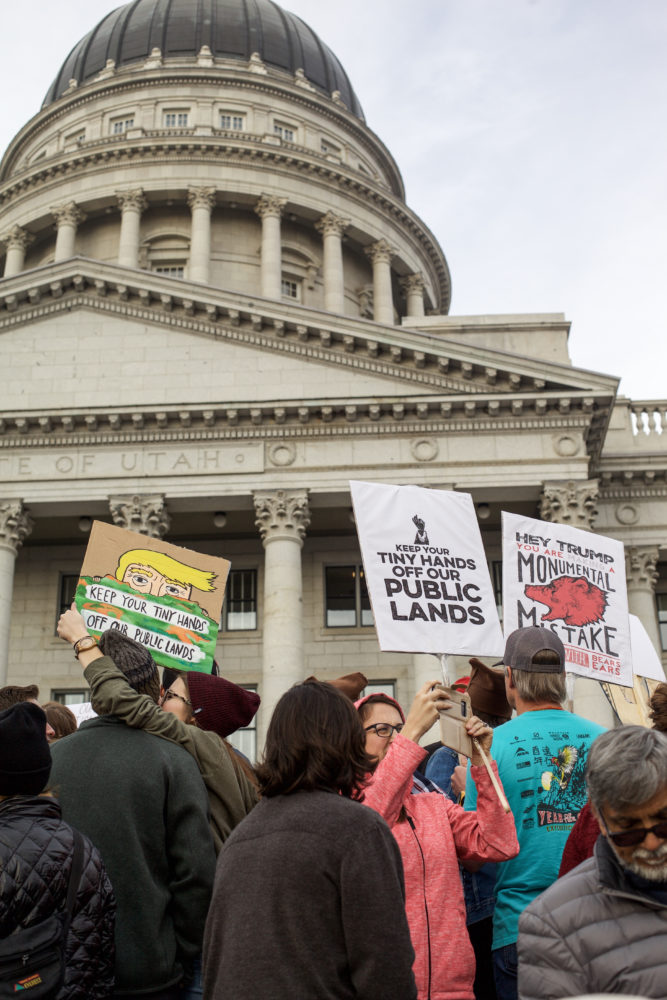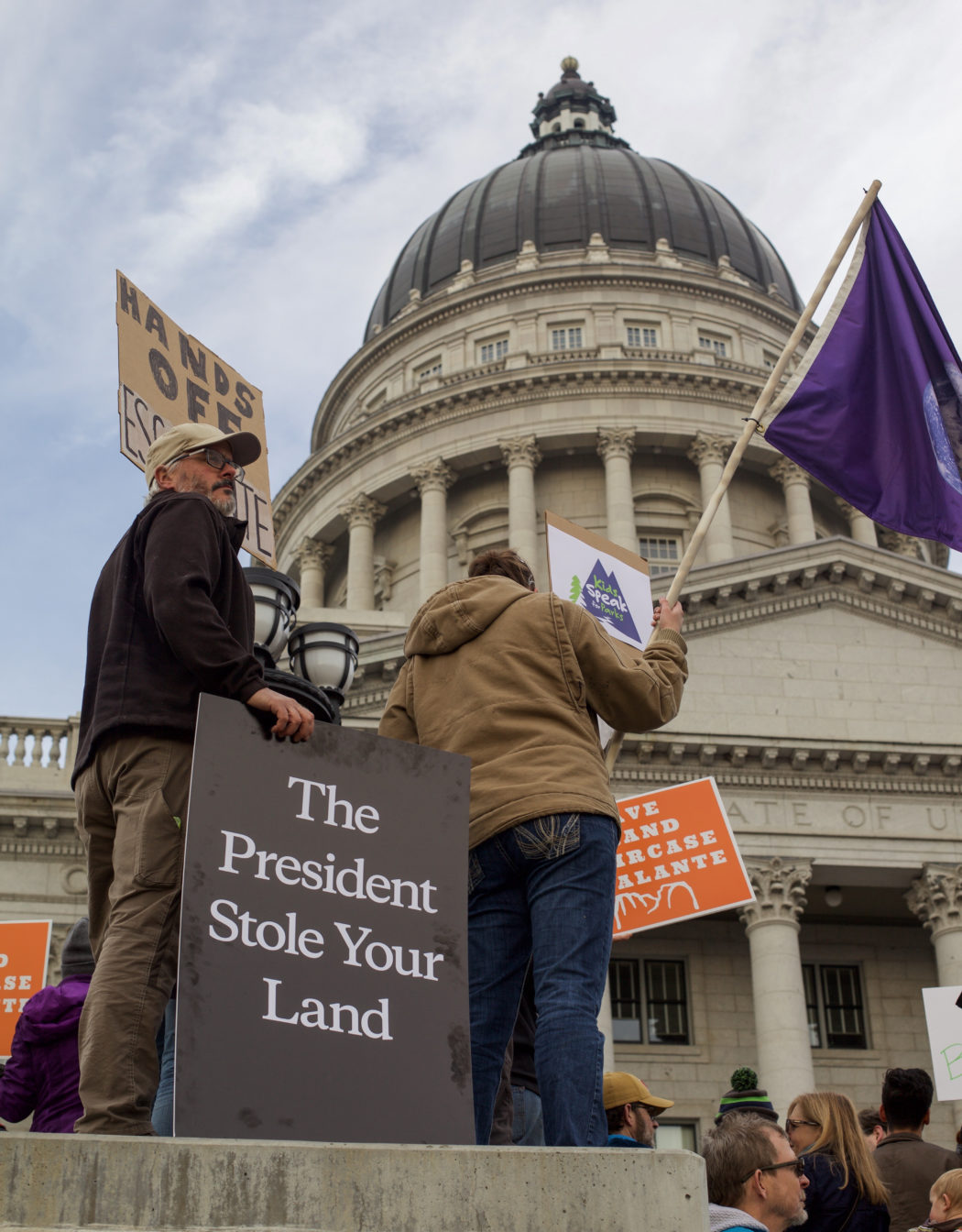‘Monumental mistake’: Utah State students protest Trump’s national monument reductions
During a day trip to Salt Lake City, President Donald Trump announced, that he will reduce the size of Bears Ears National Monument by 85 percent and the Grand Staircase-Escalante monument to about half its current size.
The move was heavily criticized by environmentalists, democrats and Native American tribes in the area.
“We will stand and fight all the way,” Russell Begaye, president of the Navajo Nation told The New York Times, adding that the United States government had already taken “millions of acres of my people’s land.”
“We have suffered enough,” he told the newspaper.
The Bears Ears monument, located in southeastern Utah in San Juan County, was originally established as a national monument by President Barack Obama in December 2016. Its existence has been debated by indigenous people, environmentalists and Utah politicians ever since.
“Abundant rock art, ancient cliff dwellings, ceremonial sites, and countless other artifacts provide an extraordinary archaeological and cultural record that is important to us all, but most notably the land is profoundly sacred to many Native American tribes,” Obama’s proclamation stated.
Within the area cut from Bears Ears, there are multiple cliff dwellings, as well as countless petroglyphs in the rock faces, according to the National Forest Service.
“They don’t know your land, and truly, they don’t care for your land like you do,” Trump said. “But from now on, that won’t matter.”
The Student Organization for Society and Natural Resources (SOSNR) at Utah State University participated in the Monumental Mistake Rally at the Salt Lake City Capitol building Saturday.
“We want to show that a lot of Utahns care about protecting national monuments and don’t want to see them reduced in size,” said Anders Hart, the vice president of outreach for SOSNR.
Twelve SOSNR members went to the Capitol, laden with signs and loud voices to add their views on Trump’s decision.
“There are local voices here in Utah that care about the land,” Hart said.
 Rachel Turley
Rachel Turley When President Trump landed in Salt Lake City, his arrival was met by thousands of protesters in support of Bears Ears. However, there are plenty of locals also in support of the decrease in size. A poll conducted by the Salt Lake Tribune and the University of Utah found that 27 percent of respondents supported the reduction of the monuments.
“I think some of the locals, especially in the Blanding area, did not want the monuments,” Hart said. “There’s been a lot of pushback from Republican politicians here in Utah; they are the same party, they want to stay on each others’ good sides.”
Last year, five tribes, including the Ute Mountain Ute Tribe, the Navajo Nation, the Ute Indian Tribe of the Uintah Ouray, the Hopi Nation and the Zuni Tribe took concerns to former President Obama, who designated Bears Ears as a national monument in part to prevent oil and coal extraction on the land, which is sacred to Native Americans in the region.
“In the proclamation President Obama put out, there is a role for the Native American tribes to be on an advisory committee handling the usage of the land,” Hart said.
Obama, following suit with presidents back to Theodore Roosevelt, designated Bears Ears as a national monument under the Antiquities Act, a 1906 act of congress that gives power to the President to designate sacred and scenic land as protected under the federal government.
The removal of such monumental designations is not covered in the act, and opens the door to a lawsuit from the Navajo Nation, challenging Trump’s decision.
“[Removing the monument] would potentially open the door to oil and gas and other extractive industries, or at least there would be fewer restrictions on the land,” Hart said.
Grand Staircase-Escalante, designated by former President Bill Clinton, was protected under similar circumstances.
“There’s a lot of coal in Grand Staircase,” Hart said.
Now that President Trump has reduced the size of the monuments, it allows private companies to buy and use the land for coal, oil and uranium mining, as well as continuing to allow cattle grazing on the land.
“It could mean less access, less protection,” Hart said. “People care about this land, and for some it is even sacred.”
—carter.moore@aggiemail.usu.edu
@CarterTheGrreat

